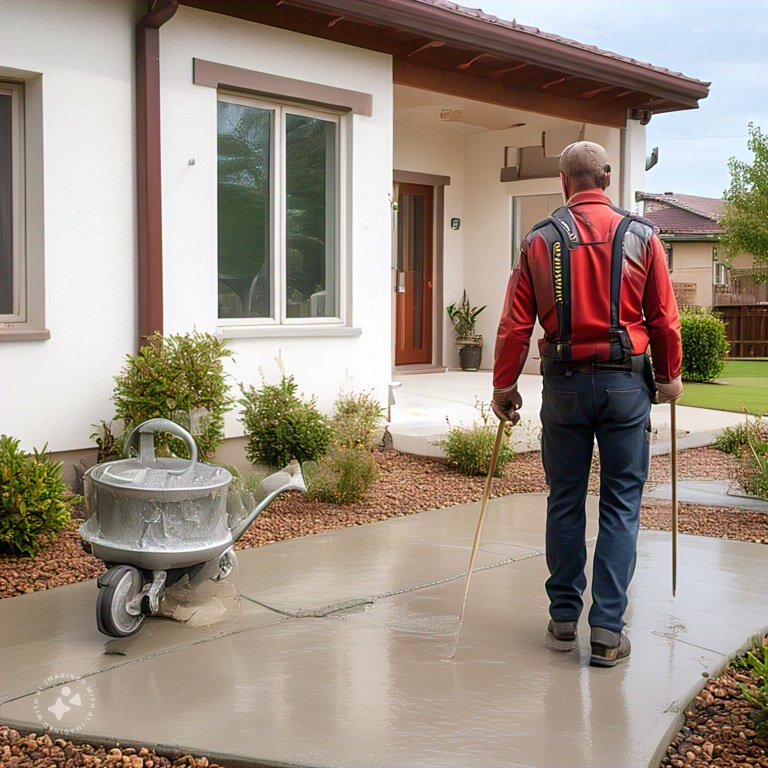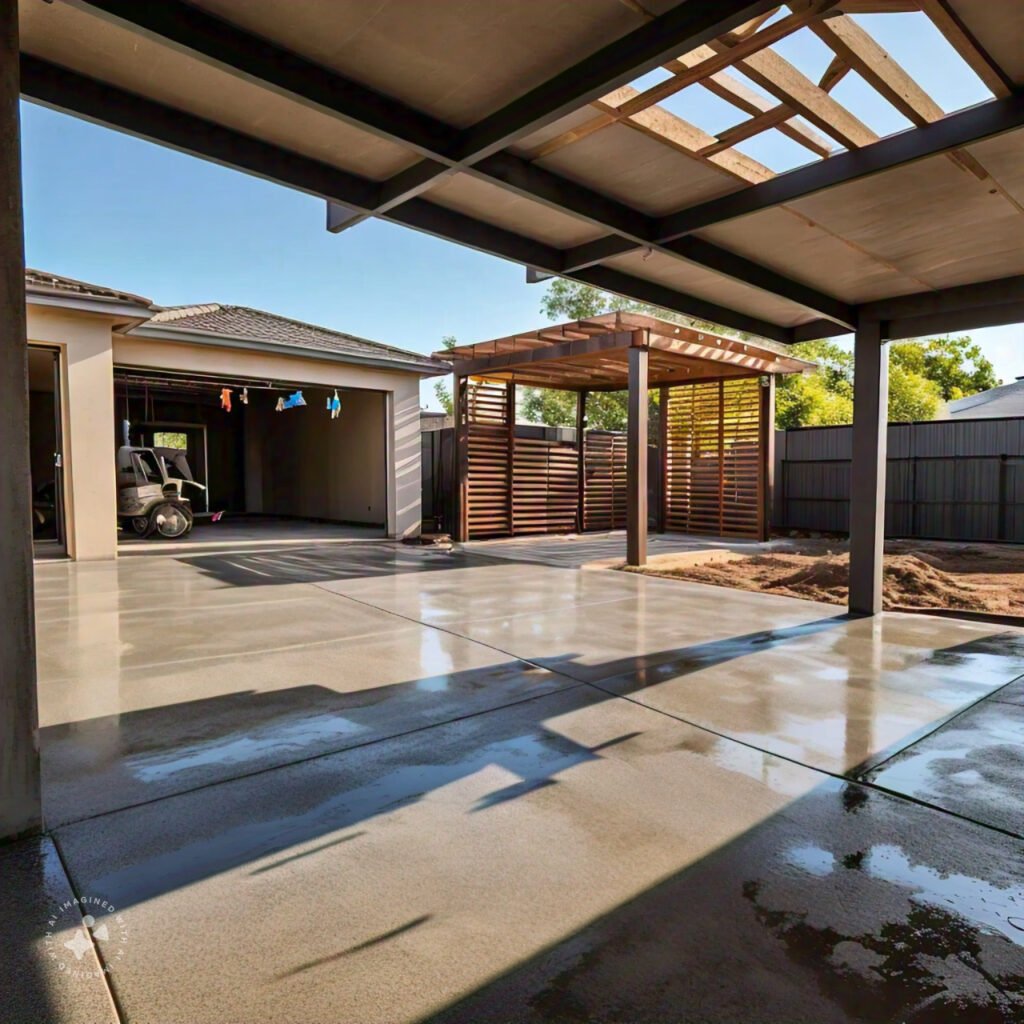Maintaining robust surfaces is crucial for urban environments where numerous structures face wear and tear. In Houston, Texas, Cross Construction Services has established itself as a leader in concrete restoration, known for its commitment to delivering exceptional quality in every project.
Their proficiency encompasses the thorough assessment of damage, ensuring that all work adheres to the highest standards of structural integrity.
This company utilizes cutting-edge methods like slab jacking and epoxy injection, which effectively prolong the lifespan of industrial flooring.
Proactive maintenance not only helps in sidestepping costly repairs but also boosts property value, making it a practical investment for commercial properties throughout Houston.
Click here to learn more about: ccsconcretedriveways.com
Click here to learn more about: ccsconcretedriveways.com
Click here to learn more about: ccsconcretedriveways.com
Click here to learn more about: ccsconcretedriveways.com
Click here to learn more about: residential concrete services
Identifying Signs of Concrete Damage
Detecting issues in your concrete surfaces is crucial for maintaining their integrity and longevity. Early recognition of problems can prevent severe deterioration and expensive repairs.
Common indicators include cracking, which can range from minor surface lines to significant fractures caused by settlement or temperature changes.
Regular sealant application can help mitigate these issues.
Another frequent sign is spalling, where the concrete surface starts to chip or flake, often linked to water infiltration or freeze-thaw cycles. Discoloration might also occur, indicating problems such as stains or fading associated with moisture issues.
Uneven surfaces may signal potential settling or erosion, creating not just aesthetic concerns but also trip hazards. Implementing routine maintenance practices like waterproofing, resurfacing, sealing, crack filling, and managing expansion joints can greatly enhance the durability of your concrete and help address these warning signs.
Understanding Concrete Repair Techniques
Maintaining the integrity of concrete surfaces is vital for ensuring their longevity and performance, as various types of damage can significantly jeopardize loadbearing structures. Cracks, spalling, and other issues require careful assessment to implement effective pavement restoration.
Exploring various methods for repair reveals unique applications that cater to different challenges, enabling property owners to address deterioration proactively.
Evaluating the extent of the damage is the first step in determining the appropriate repair method.
Patch repair is suitable for minor cracks, while resurfacing can provide a fresh finish for wider areas, enhancing the aesthetic appeal.
For severe issues, injection techniques, including epoxy or polyurethane, offer targeted solutions that can restore structural integrity. Protective measures, such as heavyduty coatings, can further enhance durability and increase the lifespan of the pavement. Ultimately, the integration of asphalt repair, pavement restoration, decorative finishes, heavy-duty coatings, and load-bearing structures ensures lasting protection and durability for all surfaces.
Concrete Surface Maintenance
- Cracks and spalling can compromise the load-bearing capacity of concrete structures.
- Patch repair is effective for minor damage, while resurfacing improves aesthetics for larger areas.
- Injection techniques with epoxy or polyurethane can restore structural integrity in severe cases.
- Heavy-duty coatings enhance durability and extend the lifespan of concrete surfaces.
Benefits of Epoxy Injection Applications
Restoring the strength of urban infrastructure is crucial for ensuring safety and longevity. One effective method for achieving this is through a specialized technique that fills cracks and voids, significantly enhancing the durability of concrete.
This approach not only reinforces the material but also actively prevents further damage, which is vital for maintaining industrial concrete structures.
The chemical properties involved provide protection against moisture and harmful chemicals, contributing to a longer lifespan compared to traditional repair methods.
The affordability of this solution effectively reduces long-term maintenance costs. The versatility of this application allows it to be utilized in various environments, making it particularly advantageous for repair specialists in demanding settings.
Importance of Proper Surface Preparation
Achieving long-lasting results in construction often hinges on the initial steps taken before repairs. Properly addressing the surface can greatly influence the durability and effectiveness of any undertaking.
When undertaken with care, these foundational actions not only enhance the bonding process but also ensure that the repair withstands the test of time, thus extending its lifespan.
Neglecting appropriate methods can lead to costly failures, including issues like peeling or cracking.
Contractors may find themselves grappling with the repercussions of overlooked preparations.
By integrating advanced technology during the groundwork phase, civil engineering projects can see a notable improvement in their outcomes, ultimately reducing future maintenance expenses.
Various techniques, such as mechanical grinding and chemical solvent cleaning, play crucial roles in achieving optimal results. Assessing the surface condition is vital; elements like rust or dirt can severely impact the success of repairs. Simple yet effective solutions can significantly enhance the finishing and durability of commercial flooring, making it an essential consideration for contractors in the civil engineering sector, especially with the advancements in technology.
Comparing Commercial Flooring Options
Choosing the right foundation for a workspace is essential for maximizing both visual appeal and operational efficiency. The ideal selection can influence key aspects such as durability and maintenance needs.
Numerous materials and solutions are available, spanning from hard surfaces to softer alternatives.
For instance, resilient options like vinyl and tile are commonly preferred in high-traffic environments because of their robust nature.
On the other hand, softer materials, such as carpet, offer comfort but may necessitate more frequent upkeep.
Applications of reinforced concrete present a durable choice that simplifies cleaning processes. Considerations for underlayment systems can greatly enhance sound absorption and insulation, thereby improving the overall functionality of the space.
Exploring these diverse options is vital for making a well-informed decision.
What is Slab Jacking and When to Use It
Addressing issues with uneven surfaces and cracks in concrete is crucial for maintaining the safety and aesthetics of structures. This method is essential for elevating and stabilizing sunken concrete slabs effectively.
By injecting a specialized material beneath the slab, a stable foundation is created, which is particularly beneficial for both residential and commercial applications.
It is commonly employed for repairing surfaces such as driveways, patios, and sidewalks.
The process not only resolves the symptoms of deterioration but also provides strong stabilization to enhance the overall appearance of the concrete. With a quick turnaround time and minimal disruption, this approach proves to be a cost-effective alternative to traditional masonry repair methods.
Concrete Repair
- Injecting specialized materials can raise and stabilize sunken concrete slabs.
- This method is effective for repairing driveways, patios, and sidewalks.
- It enhances the overall appearance of concrete while providing strong stabilization.
- The process is quick and minimally disruptive, making it cost-effective compared to traditional methods.
The Role of Crack Filling in Preservation
Maintaining the integrity of concrete surfaces is crucial for ensuring their longevity and durability. This technique plays a vital role in preventing water intrusion, which can lead to further deterioration over time.
When cracks form, they create pathways for moisture, potentially causing significant structural damage.
Regular evaluations of concrete surfaces help identify areas needing attention.
By effectively blocking moisture and contaminants, crack filling acts as a protective measure that reinforces the quality assurance of the entire structure. Through thorough site assessments, property owners can ensure that their concrete remains resilient, minimizing the need for costly repairs.
Choosing the Right Contractors for Repair.
Finding competent specialists for home repairs can significantly influence the quality of your project’s outcomes. It’s important to assess their expertise, particularly in relation to the specific roofing systems relevant to your needs.
Different professionals often focus on various areas, so aligning their skills with your project requirements is crucial.
Before making a decision, always verify essential credentials such as licenses and insurance to safeguard against potential liabilities.
Requesting detailed estimates helps you understand the financial aspects and can prevent unexpected costs later.
Effective communication is vital; ensure that your chosen contractor can share updates and address any concerns promptly.
A thorough review of their portfolio is beneficial, as it showcases previous innovations and repair techniques they have employed. Client feedback can also provide valuable insights into their reliability and commitment to quality assurance. Understanding their approach to load testing and the innovations in roofing systems and formulations can significantly enhance the development of various textures.
Commercial Concrete Repair Houston Delivers Quality Solutions
Affordable Concrete Contractors Houston Provide Top Quality Concrete Repair
Commercial Concrete Repair Houston Delivers Quality Solutions
Affordable Concrete Contractors Houston Provide Top Quality Concrete Repair


